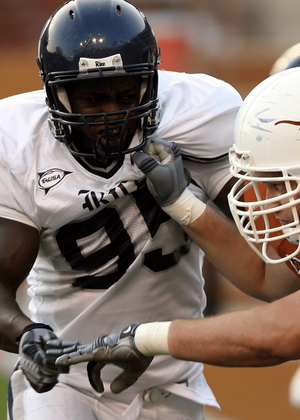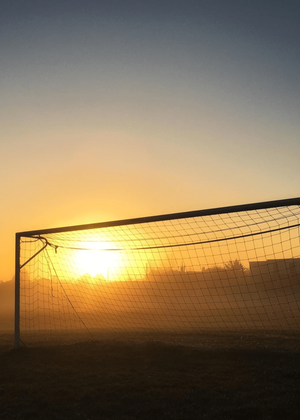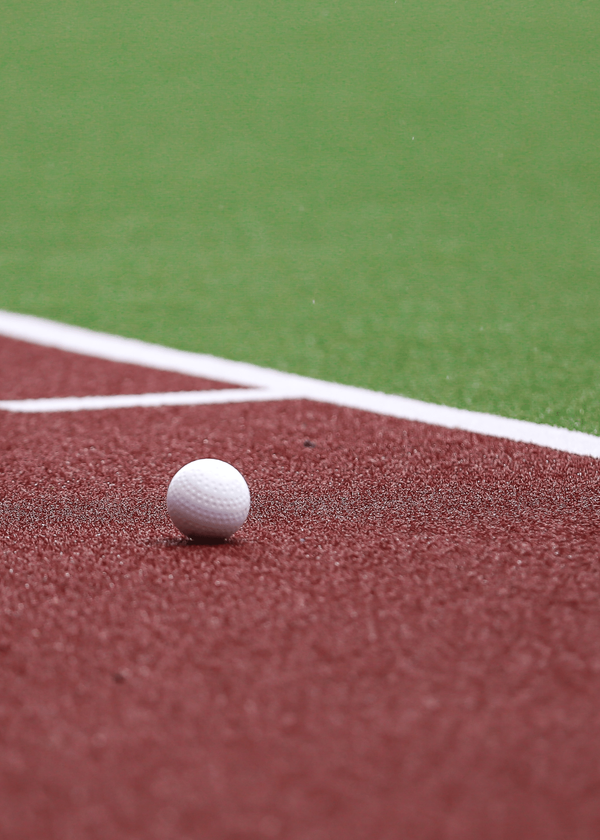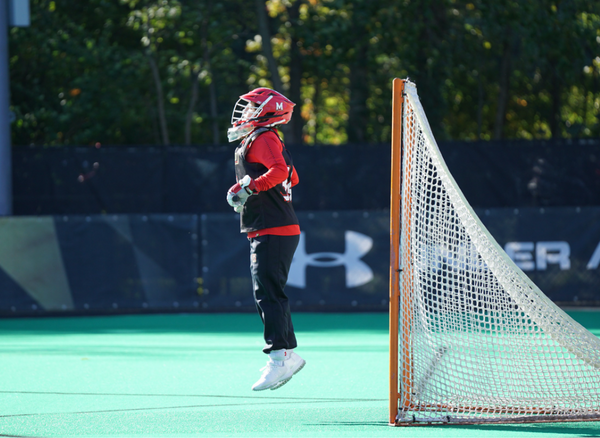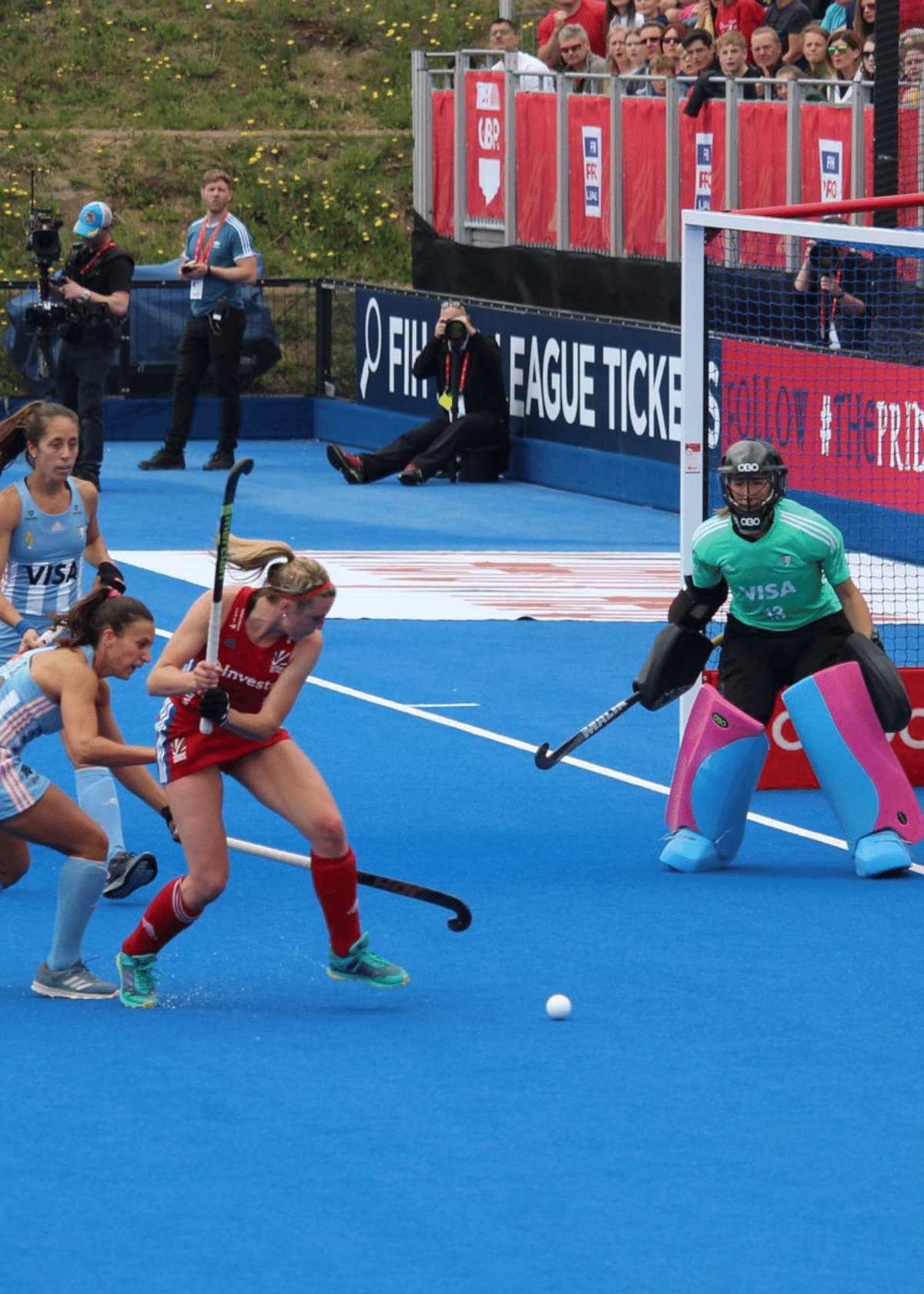Field Hockey shin guards are a must-have for any hockey player. But with so many options available, it’s hard to choose the best one. We’ve reviewed the best hockey shin guards on the market for you.
Why use shin guards?
Shin guards help protect hockey players from injuries. It's also crucial that shin guards fit well and that they induce optimal comfort for the players. Equipping yourself with comfortable, secure, and safe new shin guards makes playing an enjoyable activity. A good pair of shin guards will help give you comfort, flexibility, and confidence.
Onward for factors you need to consider before purchasing.
Sizing
Shin guards can be found in a number of designs and sizes, and so it is important to understand how to select the right size. This will determine performance and comfort in the long term. Here are some tips on how to determine the size you need.
The first step is to measure the distance between the knee joint and the lower leg joint. A proper fit ensures that the knee pad is anchored to your kneecap. Make sure you choose a shin guard size roughly the same as your shin. For example, if you measure 12 to 13 inches in length, then wear a shin guard of the same measurement.
What to look for
A hockey player's shin guards are considered a vital piece of safety gear. Have you ever got hit in the shins? If yes, then you know just how hard it is to deal with painful shin injuries.
In addition to shin guards that merely protect the shins, there are hockey shin guards that protect both the shins and ankles. Shin guards with the ankle protection are safer and more secure overall. Having shin guards permits you to actively achieve your purpose.
Material
Various materials are used in the manufacture of hockey shin guards. Some models are made of delicate foam; others are made of rigid materials such as fiberglass carbon, hard plastic, or a combination of both.
Keep in mind that things like shin pads made of Styrofoam are not suitable for adults and are mainly for young people. Most adult shin pads have an inner foam layer for added comfort.
Design
The essence of good design cannot be overlooked. Make sure that the structure you choose is anatomical and fits your legs perfectly. Doing so will allow for better movement, mobility, and comfort.
Durability
It depends on the material used to make the shin guard. This means choosing something with premium materials to ensure you live a better life.
Comfort
Shin guards should also be comfortable. So it is quite important to choose the right size. The shin guards will not protect your legs adequately if they are too large or too small. Choose one that’s ergonomic, fits your shins perfectly, and is flexible enough to accommodate moving freely.
Ventilation
A good shin guard has breathability. The outer layer has ventilation holes, and the inner layer material is also breathable. The soft foam absorbs the impact even if a stick or ball hits the shin.
Another advantage is that the shin pads are washable. Although it is often impractical to wash the entire area of shin guards, it is possible to wash the core of shin guards that touch the skin. Washing once a month is recommended.
Price
Make good use of your budget; ideally, select an option you can comfortably afford. Before choosing a shin guard, have a rough idea about its cost. Items may vary in cost per feature.
How we chose the best Shin Guards
Choosing a shin guard can be tough. There are a number of brands out there, and it can be hard to know which one is right for you. Not only do you need to find a shin guard that fits well, but you also need to make sure that it’s effective in protecting your shins from injury. After reading dozens of reviews, we’ve compiled a short list of the 3 field hockey shin guards that provide ample protection for your shins.
🏅 Gryphon G4 Field Hockey Shinguard
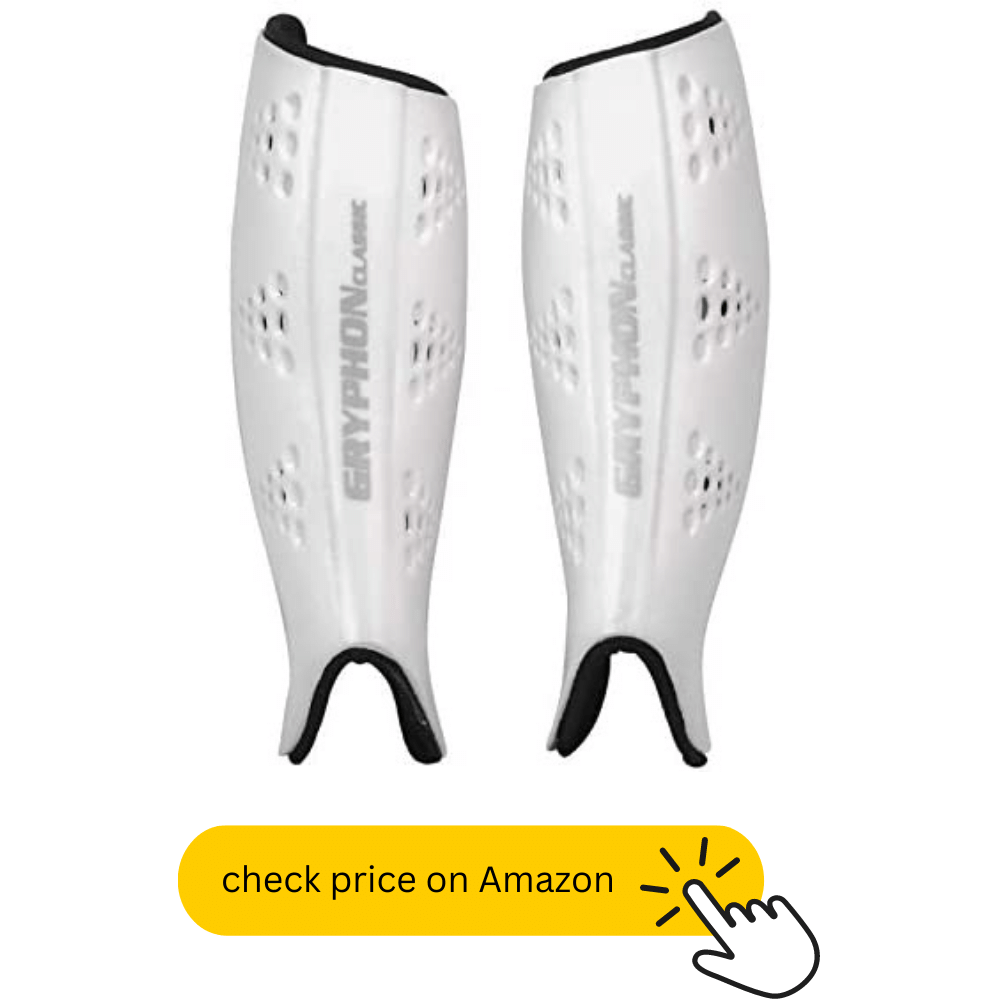
❤️ why we love this shinguard
This shin guard is lightweight. It has airflow holes for vents for the shin area, allowing you to stay cool and dry while you play, train, or play the game.
🏑 features
The Gryphon shin guard comes in different sizes small, medium, and large, 10.5”, 11.5”, and 12.5”, respectively.
These field hockey shin guards protect the shin area of the players from the sticks and ball’s impact. It comes with a heat-moulded profile shape and adjusts your shin, enabling you to play comfortably.
🥈 FHS shinguard
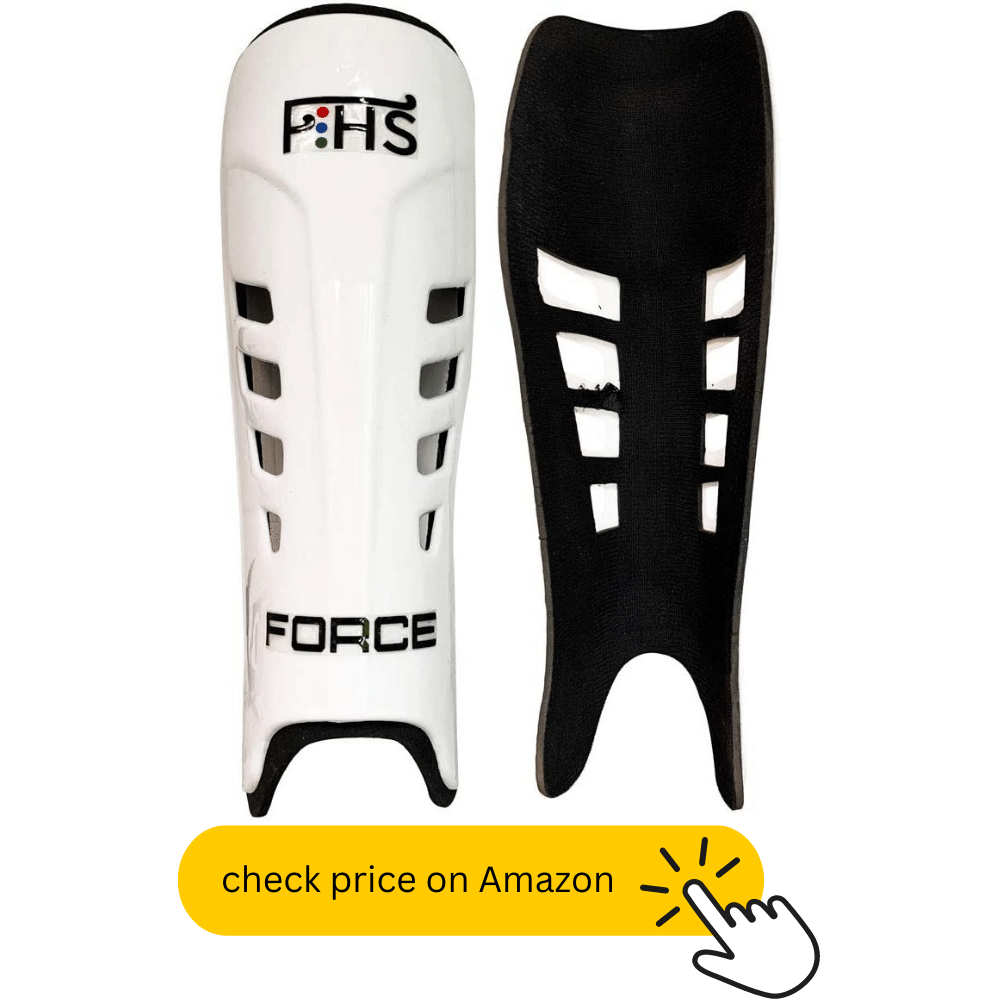
❤️ why we love this shinguard
You can be comfortable playing or practicing with these foam-padded shin guards. These eye-catching and beautiful shin pads are available in blue and plain white colors.
🏑 features
The FHS shin guards are composed of foam. The PP shin pads are ultra-lightweight with straps. Moreover, the shin pads manufactured by the FHS brand protect all players, including girls, youth, women, juniors, and seniors. These hockey shin guards have 11 X 4 X 4. The FHS shin guards are best for women, youth, girls, juniors, seniors, and newcomers just getting started.
🥉 Grays G800 Shinguard
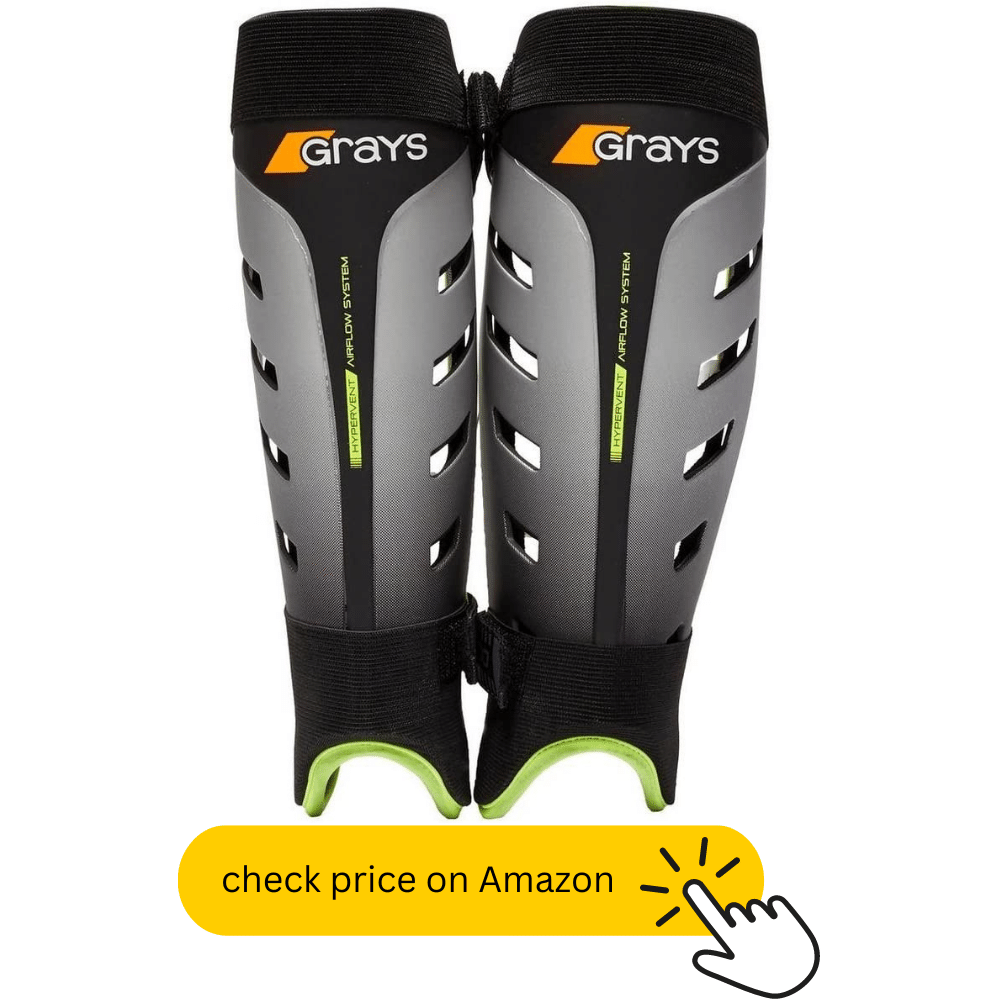
❤️ why we love this shinguard
These shin guards feature an ambidextrous design. The Grays G800 shin guard comes with ankle padding. Moreover, it also has a removable foam, which is best for washing it.
🏑 features
The Grays brand produces these field hockey shin guards. They come in silver and black colour with a weight of 64 pounds. These shin guards are made in Pakistan.
This field hockey shin guard comes with a lightweight shell and a raised spine to minimise injuries. In addition, these shin guards have premium lycra lining. You can get these shin guards in small, medium, large, and extra large sizes.
Field Hockey Shinguard FAQs
Field Hockey Shin Guards can be quite confusing, especially if you've never bought a pair before. It's hard to know what to look for when buying Shin Guards. Do you need them to be padded? What size do you need? How tight should they be? We've got the answers to all of your questions right here.
For field hockey, will a player need shin guards?
Sure, you will necessarily have to use the shin guards when you go to play a competitive hockey game. With the shin guards, you will have mobility and comfort during the game.
How is field hockey dangerous?
There is always a high risk of being injured in the field hockey game. A few common injuries you can get are; ankle sprains, fractures, strains, concussions, and dental injuries. You will be able to avoid most of the injuries if you are well familiar with how to protect yourself.
How can we keep hockey shin guards from slipping?
Mostly, the players use an older shin guard sleeve pair. Slip it over your socks, and you have to make sure you use the small size. It will make sure that the socks and shin guards are comfortable.
How can we measure the shin guards?
You can use the tape measure to know the distance between your ankle and the kneecap. This is the area that requires safety. With the shin guards, you will get better protection for this area.
How to clean a field hockey shin guard?
The best way to clean field hockey shin guards is to wash them in warm soapy water. It will remove all the dirt and sweat from the shin guards, which will be helpful.
Do you need field hockey shin guards to be padded?
There are many different types of field hockey shin guards available on the market, and some come with padding while others do not. Ultimately, it is up to the player to decide whether they feel more comfortable playing with padded or unpadded shin guards. Some players find that the extra padding makes them feel clunky and slow, while others prefer the extra protection. Ultimately, it is up to each individual player to decide what type of shin guard works best for them.
Field Hockey Shin Guards for you
In conclusion, it is necessary to use shin guards in order to prevent yourself from getting injuries. We've reviewed several shin guards in the market for you. So go out there and get yourself a pair of shin guards so you can play the sport you love without worry! Hopefully, this guide will help you to choose the best one for you.
Please check out our other field hockey articles:


